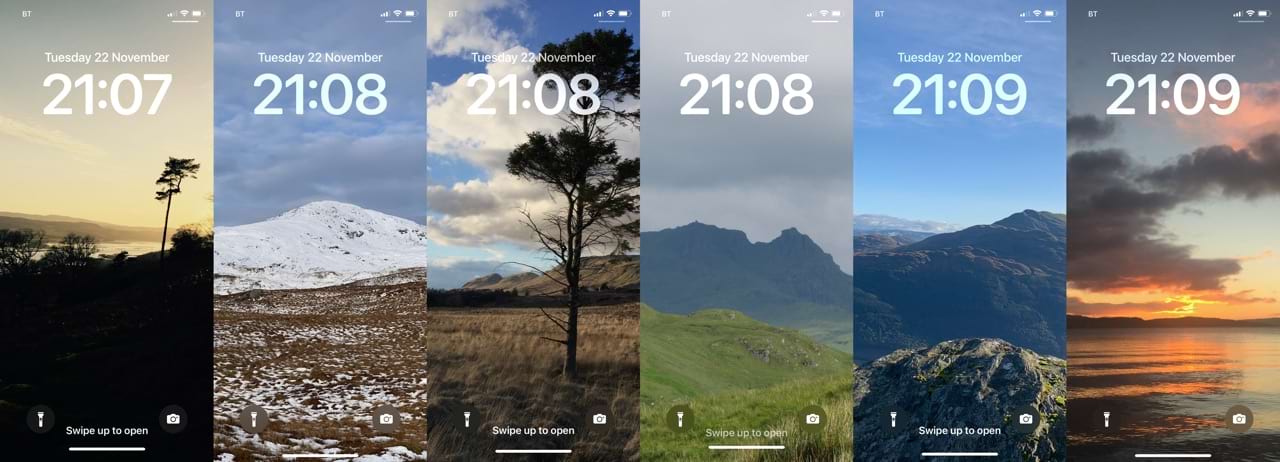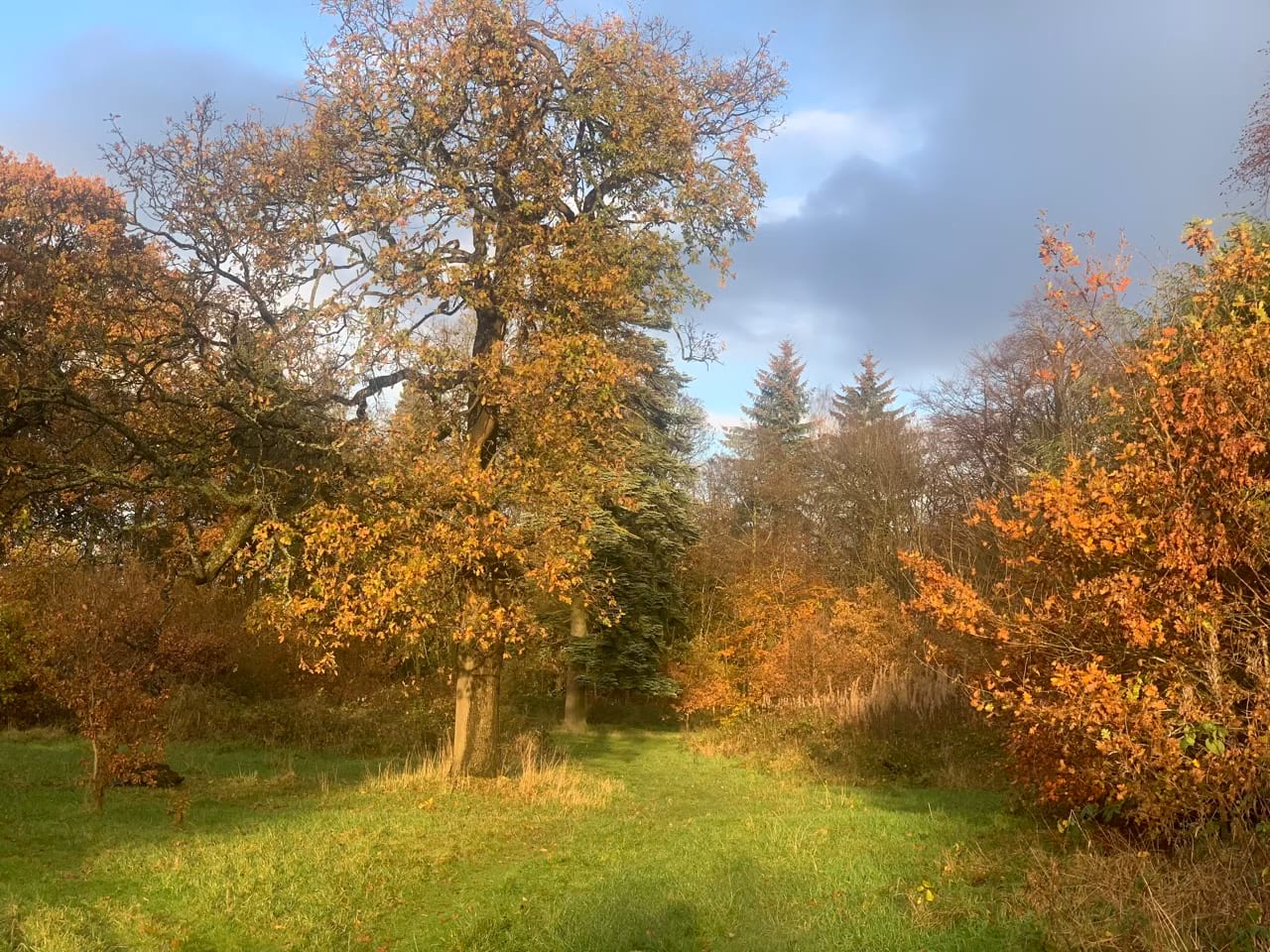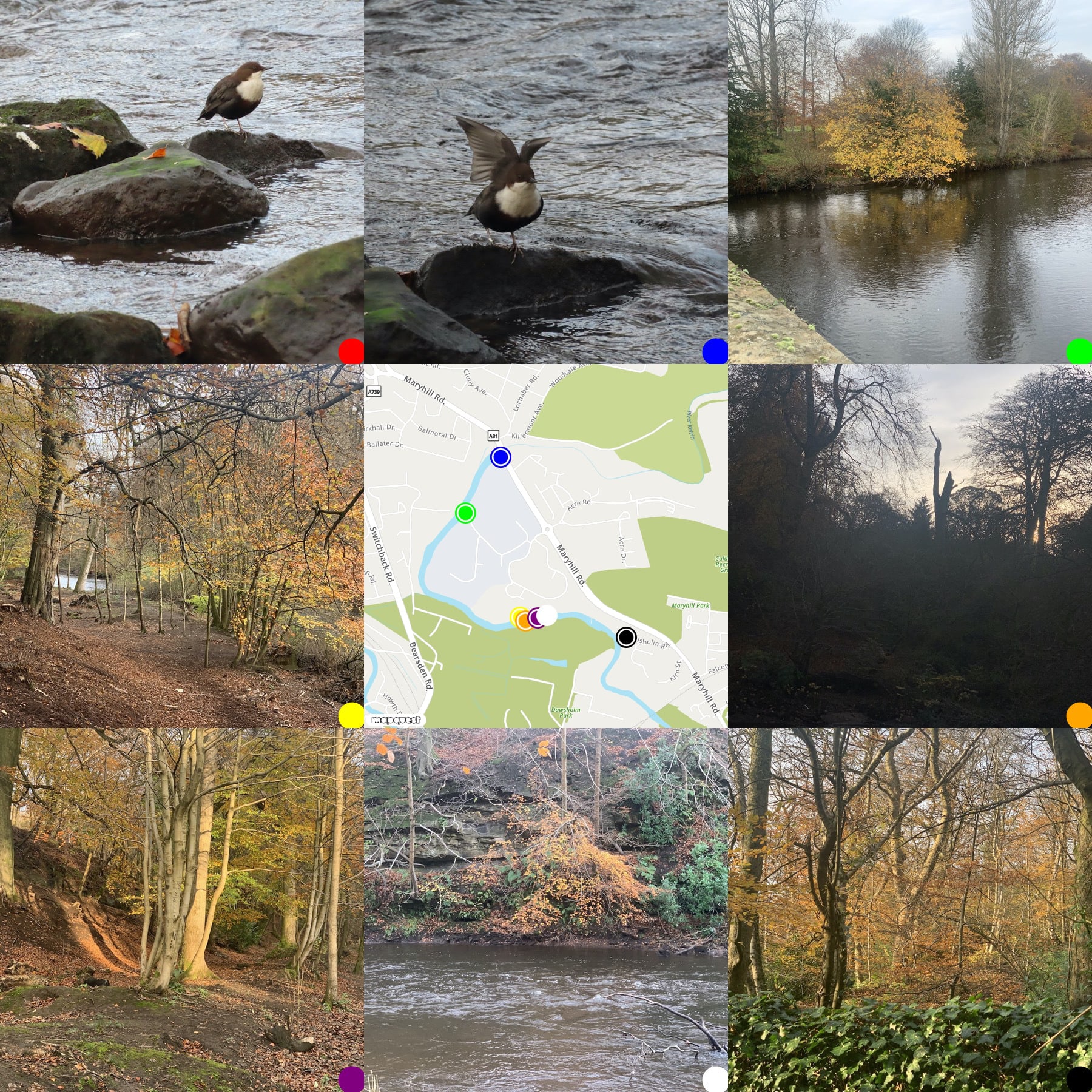I don’t usually pay a lot of attention to new features when an OS updates nowadays. But the other day I discovered the “photo shuffle” Lock Screen feature on my phone. Now every time I unlock my phone I see another random image. I picked nature as the subject. I am not sure what algorithm is picking the photos but the results are delightful.
Read seven steeples by Sara Baume ★★★★★ 📚
October mornings peeled the night cloud back to its subcutaneous lilac tissue.
The leaves earned their name by leaving the trees.
A couple drop out and slowly dissolve into nature. Dreamy poetic prose.
@dogtrax
At least 30 years ago I saw a book in a secondhand shop, in Bank Street, beautifully produced, a translation of a French poet who had lived in Japan.
Some haiku like poems & some one word ones. I can’t recall any but I remember placement on the page was important.
I couldn’t afford the book.
evanescing
#FeedReaderFriday 1
The idea
I’ll share people’s sites I follow and enjoy. I’ll also suggest some feed readers to try out along with other related resources. I’ll use the tag/hashtag #FeedReaderFriday to encourage the website to website conversation. If you’re interested in the experiment, do come and join me and help to spread the word.
#FeedReaderFriday: A Suggestion for Changing our Social Media Patterns | Chris Aldrich
Feed Readers
Feed readers allow you to ‘follow’ websites something of the same way as you follow accounts on Twitter, mastodon and the like. Feed readers are different in that the feeds they read are, mostly, on the open web. Feed Readers use RSS to pull content from other sites for you to read. If you listen to podcasts in an app you are using a Feed Reader, the app. Podcasts like blog posts are distributed via RSS.
Chris suggests What is a feed? (a.k.a. RSS) | About Feeds to get started.
My main feed reader is Inoreader. It has been the one I’ve used most since the demise of Google Reader. It allows me to quickly read or skim a lot of blogs and organise that reading in a variety of ways.
More recently I’ve been using FeedLand. FeedLand is a development by Dave Winer who has an amazing pedigree in software development, RSS in particular.
FeedLand is a really interesting product, still under development but ready for use. FeedLand allows you to collate RSS feeds either by adding them yourself or by seeing what feeds other users have added. FeedLand then let’s you to organise, categorise these feeds. FeedLand is a feed reader, so you can read the feeds you follow. FeedLand allow you to publish readers for other folk to read in a few different ways. Here is one hosted on FeedLand and one on my raspberry pi. Both are experiments at the moment. Finally FeedLand allows you to produce a simple feed. Of your own. Here is mine viewed on FeedLand.
Folk to follow
So a couple of people I find it interesting to follow via RSS
- the dailywebthing linkport one of Joe Jennet’s suite of sharing sites, three links a day. A huge variety of interesting sites. Not so much a gold mine as a gold, silver, bronze, and rock mine. RSS FEED
- CogDogBlog RSS FEED Alan blogs about education, open, WordPress & Flickr amongs other things. Great detail with a personal touch. I think I’ve been reading him for as long as I’ve been blogging. A wonderful blog.
I am going to try and post for the next couple of Fridays with a wee bit about readers I use and a couple of suggestions for follows.
Ollie Bray’s The Future of Digital in Scottish Education – Brief Thoughts
I’ve been listening to Ollie Bray’s The Future of Digital in Scottish Education. I say listening rather than watching as I huffduffed the video to a mp3 file so that I could hear to it on my commute 1.
Ollie was looking for feedback, so I though I’d jot down some notes. The quotes are taken from the Youtube transcript so are a bit odd. I’ve snipped out the audio too. There is no license but I think quoting in context is probably ok…
young people probably then going to need some content gosh we’re terrible and Scotland about Reinventing content all the time now we want to have agency to be able to create our own content but actually you know some sort of nationally procured content for some things is probably a good idea
One of the reasons it might be difficult to find the time for new and innovative digital practises is the amount of time spent by Local Authorities, schools and staff buying, filtering or creating resources. I know my own and most of my colleagues pocket is lighter.
Another reason is:
we’ve got an overcrowded curriculum in many ways I hope that we’re able to strip some of the things out
I’ve been hunting for the audio of David Cameron railing against the number of E&Os (>1800 I think) and the difficulty of keeping that in our heads. It really speaks to this, but can’t find it yet.
we also know of course that actually probably we’re about to kind of see and I I feel this that we’re about to get a bit more of a Resurgence of creative technology approaches and what I mean by this is that probably for a number of years now you know in some parts of Scotland we focus quite a lot on the productivity tools um you know 10 or 15 years ago there was a lot of work going on around podcasting and digital video and that seems to have dipped you know for a little while and we’ve been focusing more on these kind of productivity Tools around around that things like the ability to do a spreadsheet or a PowerPoint presentation or to format something in word and all these things are worthy in nature that don’t necessarily you know develop kind of the creative approaches to using ICT
There is more in this vein.
I hope the resurgence happens soon. I’ve never understood why podcasting, in particular, didn’t catch on. I’ve listed some of the benefits before. So I’ll not go on.
I wonder if the dip in the creative use of digital is due to the power of the major software platforms we use for free. An examination of our choice of tools is something I hope Ollie will address. We tend to use the tools that are supplied without thinking about them critically. All software is opinionated. All vendors need to have their shareholders in mind. Are the education philosophies of these giants aligned with ours? I am wondering about social media tools as well as productivity & creative suites. Some of the more “creative” tools they supply seem to not give the user freedom but more the choice between predesigned templates, sometimes at random. What are the reasons for supplying free tools to education? I am not suggesting we should not use them, but that we should think about it.
Talking of tools, I wish Ollie still kept a blog. He asks for responses via e-mail or twitter. A blog post might have been a good choice. Could pull together the video, a transcript & responses.
There is a lot more to think about in the video, even if you only listen to it. Refresh of Glow, supply of devices and conectivity and more. If your interested in digital education in Scotland it is worth a listen. I’d be interested in others responses.
This is a really nice idea Chris.
I am currently trying out FeedLand Dave Winer’s new project. This is a feed collector & reader. You can also see what other people are subscribing to.
Read: A Darker Domain by Val McDermid ★★★☆☆ 📚
I hate to say this because I adore my fellow tweeps, but some of the least effective content on here right now are auto-posted tweets. They’re visually off-putting, and the content sometimes doesn’t translate well for this environment. If you’re going to cross-post to Twitter and Mastodon, perhaps consider doing so manually and adjusting accordingly. (Said with love :twitter:)
I POSSE and cross post a fair bit, but I often just do it manually. Helps with both formatting & alt-text on images. But this like I am relying on brid.gy. It works well for Twitter, so this is a mastodon test.



